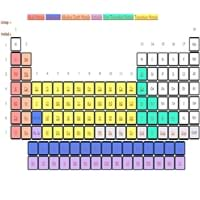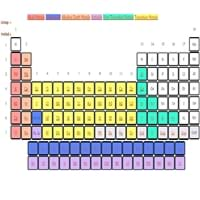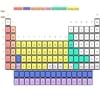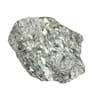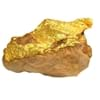Seaborgium Curium Comparison
Periodic Table
Symbol
Sg
Cm
Group Number
6
12
Not Available
Period Number
7
7
Block
d block
f block
Element Family
Transition Metal
Actinide
CAS Number
54038812
9
7440519
36
Space Group Name
Not Available
Not Available
Space Group Number
Not Available
Not Available
Facts
Interesting Facts
- Seaborgium most stable isotope is Sg and it has 2.1 min of half- life.
- And other isotopes of Seaborgium have half-lives as short as 3 ms.
- Curium metal does not occur free in nature.
- Curium metal is a synthetically produced metal.
Sources
Synthetically Produced
Bombarding Plutonium with Helium Ions
History
Who Discovered
Lawrence Berkeley National Laboratory
Glenn T. Seaborg, Ralph A. James, Albert Ghiorso
Discovery
In 1974
In 1944
Abundance
Uses
Uses & Benefits
- Currently known uses of Seaborgium metal are limited to research purpose only.
- Curium metal is used to provide power to electrical equipment for space missions.
Industrial Uses
NA
NA
Medical Uses
NA
NA
Other Uses
Research Purposes
Research Purposes
Biological Properties
Present in Human Body
No
No
In Blood
Not Available
0.00 Blood/mg dm-3
37
In Bone
Not Available
0.00 p.p.m.
36
Physical Properties
Melting Point
Not Available
1,340.00 °C
34
Boiling Point
Not Available
3,110.00 °C
30
Appearance
Physical State
Solid
Solid
Color
Unknown
Silver
Luster
Unknown Luster
Metallic
Hardness
Speed of Sound
Not Available
Not Available
Optical Properties
Allotropes
No
No
α Allotropes
Not Available
Not Available
β Allotropes
Not Available
Not Available
γ Allotropes
Not Available
Not Available
Chemical Properties
Chemical Formula
Sg
Cm
Isotopes
Known Isotopes
9
29
15
24
Electronegativity
Pauling Electronegativity
Not Available
1.30
32
Allred Rochow Electronegativity
Not Available
1.20
27
Electropositivity
Pauling Electropositivity
Not Available
2.70
22
Ionization Energies
1st Energy Level
757.40 kJ/mol
21
581.00 kJ/mol
99+
2nd Energy Level
1,732.90 kJ/mol
28
1,196.00 kJ/mol
99+
3rd Energy Level
2,483.50 kJ/mol
99+
2,026.00 kJ/mol
99+
4th Energy Level
3,415.60 kJ/mol
99+
3,550.00 kJ/mol
99+
5th Energy Level
4,561.80 kJ/mol
38
Not Available
6th Energy Level
5,715.80 kJ/mol
25
Not Available
Electrochemical Equivalent
Not Available
3.07 g/amp-hr
16
Electron Work Function
Not Available
Not Available
Other Chemical Properties
NA
Ionization, Radioactive Isotopes
Atomic Properties
Atomic Number
106
12
96
22
Electron Configuration
[Rn] 5f14 6d2 7s2
[Rn] 5f7 6d1 7s2
Crystal Structure
Body Centered Cubic (BCC)
Double Hexagonal Close Packed (DHCP)
Crystal Lattice
BCC-Crystal-Structure-.jpg#100
DHCP-Crystal-Structure-of-Curium.jpg#100
Atom
Number of Protons
106
12
96
22
Number of Neutrons
157
7
151
10
Number of Electrons
106
12
96
22
Radius of an Atom
Atomic Radius
132.00 pm
99+
174.00 pm
20
Covalent Radius
143.00 pm
99+
169.00 pm
26
Van der Waals Radius
Not Available
200.00 pm
28
Atomic Weight
269.00 amu
9
247.00 amu
18
Atomic Volume
Not Available
18.28 cm3/mol
26
Adjacent Atomic Numbers
Valence Electron Potential
Not Available
44.50 (-eV)
38
Lattice Constant
Not Available
Not Available
Lattice Angles
Unknown
NA
Lattice C/A Ratio
Not Available
Not Available
Mechanical Properties
Density
Density At Room Temperature
35.00 g/cm3
4
13.51 g/cm3
25
Density When Liquid (at m.p.)
Not Available
13.85 g/cm3
10
Tensile Strength
Not Available
Not Available
Viscosity
Not Available
Not Available
Vapor Pressure
Elasticity properties
Poisson Ratio
Not Available
Not Available
Other Mechanical Properties
Unknown
Unknown
Magnetic Properties
Magnetic Characteristics
Specific Gravity
Not Available
13.51
17
Magnetic Ordering
Unknown
Antiferromagnetic
Electrical Properties
Resistivity
Not Available
1.25 nΩ·m
99+
Thermal Properties
Specific Heat
Not Available
Not Available
Molar Heat Capacity
Not Available
Not Available
Thermal Conductivity
Not Available
Not Available
Critical Temperature
Not Available
Not Available
Thermal Expansion
Not Available
Not Available
Enthalpy
Enthalpy of Fusion
Not Available
15.00 kJ/mol
21
Standard Molar Entropy
Not Available
Not Available
|
||
|
||
|
